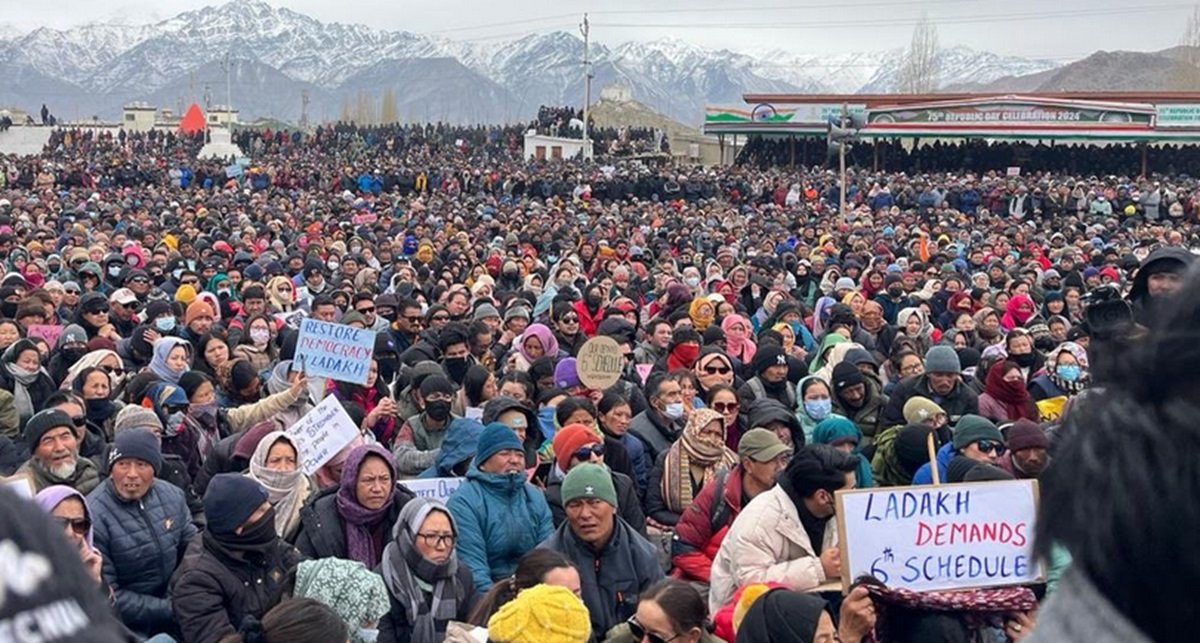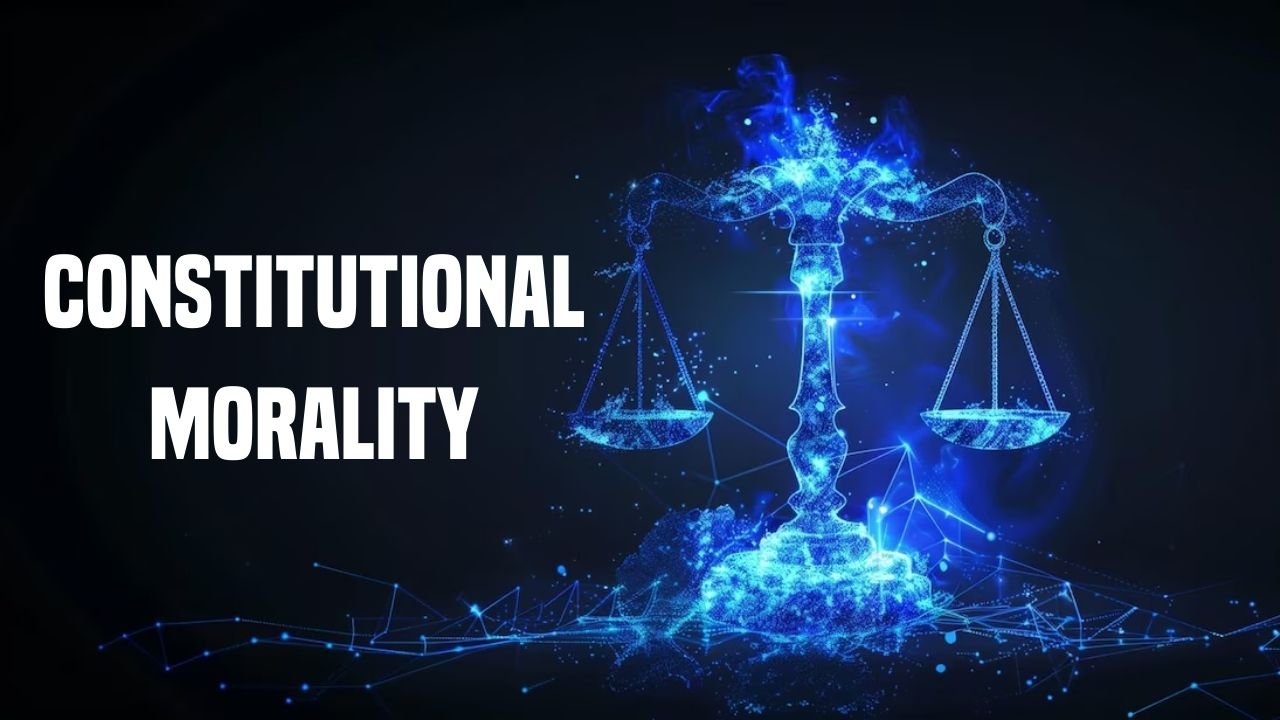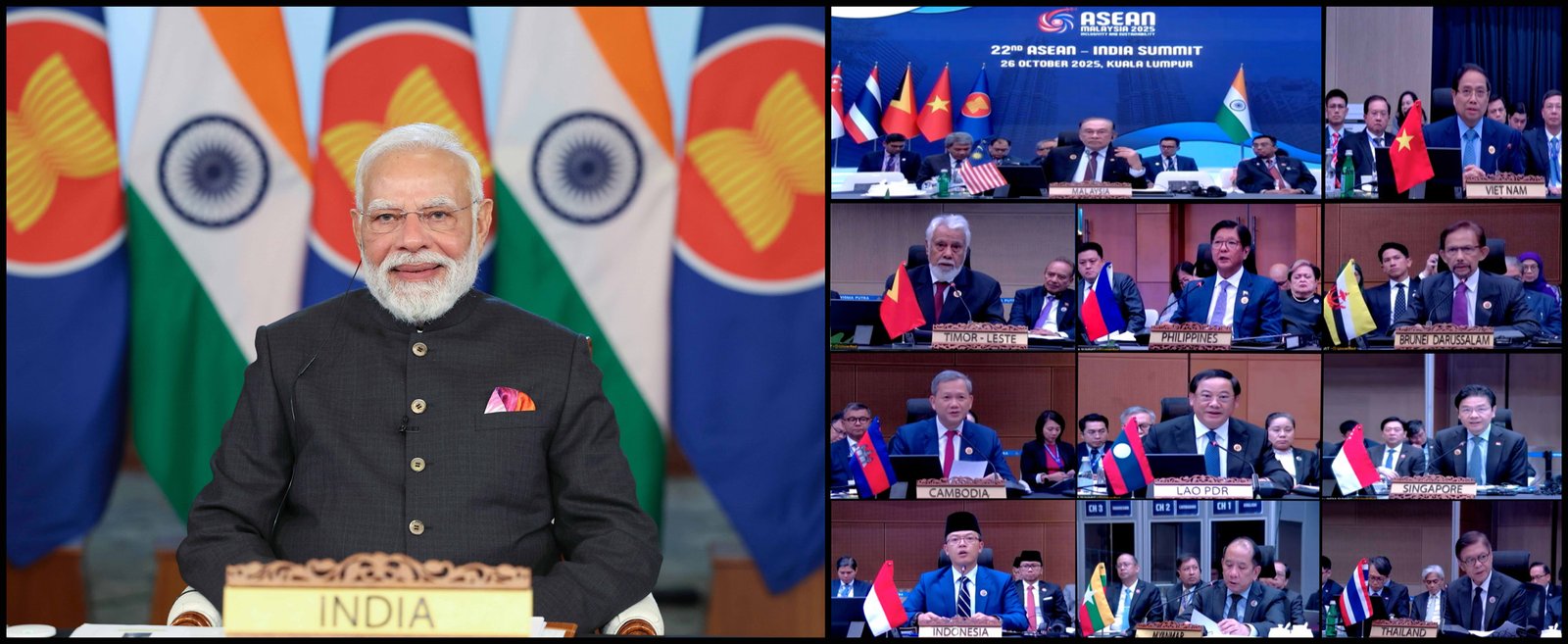Why in the News?
The conversion of Ladakh into a Union Territory without a legislature in 2019 has fueled long-standing discontent, culminating in violent protests in 2025 demanding statehood, Sixth Schedule safeguards, and local empowerment, intensified by the NSA arrest of activist Sonam Wangchuk.
Key Highlights
- Ladakh before 2019: Divided Aspirations
- Leh (Buddhist-majority district) had long demanded UT status with the legislature, because they felt ignored under J&K’s rule (dominated by Kashmir politics).
- Kargil (Muslim-majority district), on the other hand, opposed the idea of bifurcation and wanted either reintegration with J&K or separate statehood for Ladakh.
- They (Muslim-majority district) feared that being separated from J&K and directly ruled from Delhi would dilute their voice and identity.
- August 2019 – Bifurcation of J&K and UT Status for Ladakh
- Leh celebrated the UT status, believing it was a recognition of its distinct identity.
- Kargil protested, seeing the move as a betrayal.
- Soon, Leh realised that the UT came without a legislature, creating disappointment and disillusionment.
- Emergence of Movements and United Demands
- In 2020, the People’s Movement for Sixth Schedule (later the Leh Apex Body) demanded inclusion under the Sixth Schedule for protection of land, jobs, and identity.
- What led to the joint movement of the Leh Apex Body (LAB) and Kargil Democratic Alliance (KDA)?
- The absence of legislature, lack of safeguards, unemployment, and centralised governance made both Leh and Kargil realise that their struggles were the same.
- This shared sense of betrayal led to the joint movement of LAB and KDA, demanding statehood and Sixth Schedule protections.
- In 2021, LAB and KDA joined forces, demanding:
- Statehood for Ladakh
- Sixth Schedule safeguards
- A Public Service Commission (PSC)
- Separate parliamentary seats for Leh and Kargil
- Government’s Response and High-Powered Committee (2023 onwards)
- A High Powered Committee (HPC) was set up in 2023 to engage with stakeholders.
- Despite several rounds of talks, no concrete outcome was achieved, leading to growing alienation.
- Role of Sonam Wangchuk and Gandhian Protests
- Climate activist Sonam Wangchuk used non-violent methods – hunger strikes, padayatras, and ecological activism.
- He gave the movement national attention by linking it to ecological fragility, democratic deficit, and youth unemployment.
- His arrest under the NSA in 2025 further inflamed public anger.
- Why was Sonam Wangchuk arrested?
- His peaceful but highly influential protests mobilised thousands of Ladakhis and attracted national attention.
- After violence broke out in September 2025, the government, citing security concerns in a sensitive border region, used the NSA to detain him.
- Ironically, this arrest only strengthened the Ladakh movement.
- Centralised Bureaucratic Governance
- The Lieutenant Governor’s office holds centralised power, sidelining Ladakh Autonomous Hill Development Councils (LAHDCs).
- Lack of local cadres and absence of a PSC have led to joblessness among Ladakhi youth.
- Bureaucrats unfamiliar with Ladakh’s socio-cultural realities make policies disconnected from local needs.
- Partial Reforms but Incomplete Solutions (2025 Regulations)
- The Presidential Regulations (June 2025) provided:
- 85% job reservation for locals
- Recognition of five Ladakhi languages
- The Presidential Regulations (June 2025) provided:
- 33% women’s reservation in Hill Councils
- Despite this, the core issues of statehood, Sixth Schedule, and PSC remain unaddressed, which led to the recent mass movement.
Implications
- Political Alienation – Lack of representation and erosion of local institutions create a sense of betrayal.
- Strategic Risks – Disaffection in Ladakh, a frontier against China and Pakistan, can weaken India’s defence posture.
- Ecological Fragility – Unregulated tourism, glacier retreat, and aquifer depletion threaten Ladakh’s fragile ecosystem.
- Youth Disillusionment – Rising unemployment and absence of opportunities risk long-term instability.
- Democratic Deficit – Concentration of power in bureaucracy undermines India’s federal and democratic ethos.
Challenges and Way Forward
| Challenges | Way Forward |
| Absence of legislature and democratic representation | Establish either a Legislative Assembly or grant greater legislative powers to LAHDCs. |
| Lack of constitutional safeguards for land, culture, and identity | Extend Sixth Schedule-like protections to preserve Ladakh’s tribal and ecological heritage. |
| Youth unemployment and absence of PSC | Create a Ladakh Public Service Commission to ensure fair recruitment of locals. |
| Ecological vulnerability from unchecked projects | Draft an Ecological Charter ensuring sustainable, community-led development with strict environmental standards. |
| Historical divide between Leh and Kargil | Institutionalise a permanent dialogue forum (Leh Apex Body + Kargil Democratic Alliance) for joint decision-making. |
Conclusion
Ladakh today reflects the tensions between security, ecology, and democracy. While the UT status promised empowerment, it has resulted in centralised bureaucracy, ecological threats, and youth alienation. For India, Ladakh is not just a borderland but a strategic and cultural sentinel. Empowering Ladakh with democratic safeguards, sustainable development, and cultural protections is not just a moral duty but a strategic necessity for India’s northern frontier.
| EnsureIAS Mains Question Q. The demand for Sixth Schedule protections and statehood in Ladakh reflects a deeper crisis of democracy, ecology, and strategic neglect. Discuss. (250 Words) |
| EnsureIAS Prelims Question Q. Consider the following statements about Ladakh’s governance and safeguards: 1. The Ladakh Autonomous Hill Development Councils (LAHDCs) enjoy legislative autonomy under the Sixth Schedule of the Constitution. 2. The 2025 Presidential Regulations introduced job reservations for locals, recognition of Ladakhi languages, and women’s representation in councils. 3. Ladakh does not currently have a Public Service Commission (PSC). Which of the above statements is/are correct? A) 1 and 2 only Answer: B) 2 and 3 only Explanation: Statement 1 is Incorrect: LAHDCs have limited administrative powers, not Sixth Schedule autonomy. Statement 2 is Correct: June 2025 Presidential Regulations ensured job and language protections. Statement 3 is Correct: Ladakh lacks a PSC; this is a key demand of protestors. |
Also Read | |
| UPSC Foundation Course | UPSC Daily Current Affairs |
| UPSC Monthly Magazine | CSAT Foundation Course |
| Free MCQs for UPSC Prelims | UPSC Test Series |
| ENSURE IAS NOTES | Our Booklist |





